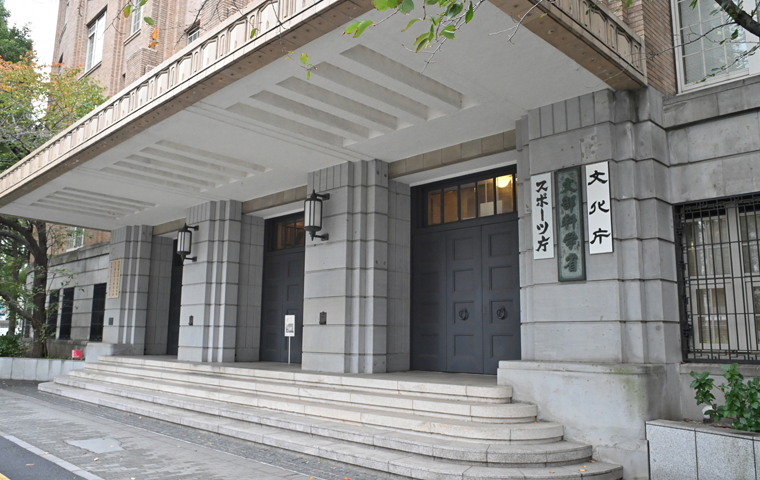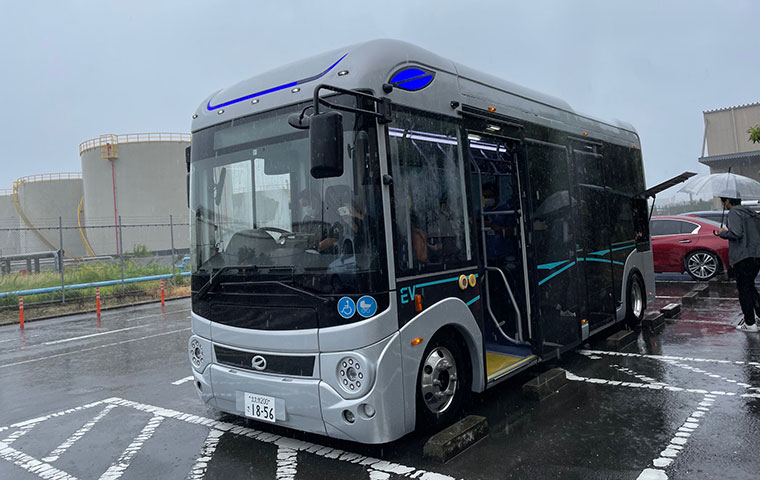H3 Rocket’s Redemptive Flight, “Michibiki” Lighting the Future
Related Articles
H3 Rocket’s Comeback Flight: Successful Launch of “Michibiki-6”
At 5:30 p.m. JST on February 2, 2025, a streak of light shot into the sky from the Tanegashima Space Center in Kagoshima Prefecture. Japan’s new flagship launch vehicle, the H3 (Flight 5), roared off the pad and left the earth behind. This launch was more than just another mission; it was the climactic chapter in a story of redemption and renewal for Japan’s space program. The cheers and applause that reverberated through the control room spoke more eloquently than anything else to the weight of this success.
Aboard H3 Flight 5 (H3 F5) was the Quasi-Zenith Satellite “Michibiki-6” (QZS-6). About 29 minutes after liftoff, the rocket precisely inserted the satellite into its planned geostationary transfer orbit with a perigee of roughly 370 km and an apogee of about 35,586 km, confirming mission success. Following the bitter failure of the inaugural H3 in March 2023, this marked four consecutive successes, firmly establishing H3 on a path to stable operations as Japan’s primary space transportation system and making a strong impression at home and abroad.
At the post-launch press conference, JAXA President Hiroshi Yamakawa relaxed his expression, saying he was “relieved and very pleased,” and renewed his resolve to maintain Japan’s autonomy in space utilization and secure international competitiveness. Mitsubishi Heavy Industries program director Iwao Igarashi, representing the developer/manufacturer, looked back on the road to this point: “Development was difficult and caused concern, but we’ve reached this day. Four successes are the fruit of everyone’s support and effort.”
Notably, the launch was postponed by one day from the original February 1 date due to forecast deterioration in weather. This cautious decision, while it may seem minor, symbolizes an important mindset shift in Japan’s space endeavors. The H3’s maiden failure has been linked to an overreliance on past “track records” and insufficient verification. Having learned that bitter lesson, JAXA and MHI have established an operational philosophy that prioritizes assured mission success over schedule—more risk-averse and methodical. The 24-hour delay was proof of the effort invested in restoring trust and a necessary step toward rebuilding confidence among commercial customers and the public.
This mission also stands out as a successful model of public–private collaboration in Japanese space development: the national agency JAXA led development, MHI handled manufacturing and launch, and the Cabinet Office’s “Michibiki”—a critical national infrastructure—was delivered to orbit. This tripartite cooperation is the engine behind the government’s ambitious goal of doubling the space industry’s market size from ¥1.2 trillion to ¥2.4 trillion by the early 2030s. The success proves that this model can reliably execute complex, high-risk national projects.
Rising from Failure: Restoring Confidence in Japan’s New Flagship H3

Behind H3 Flight 5’s success lies a grueling climb from a serious setback. On March 7, 2023, the much-anticipated H3 Test Flight 1 failed when its second-stage engine did not ignite, leading to a commanded destruction that also ended the mission of the Advanced Land Observing Satellite-3 (“DAICHI-3”). Coming on the heels of an Epsilon small-rocket failure and a test-stand explosion during engine firing, the incident deeply shook confidence in Japan’s space technology.
Immediately after the failure, the Ministry of Education, Culture, Sports, Science and Technology (MEXT) and JAXA set up a task force. The investigation was arduous—so much so that the project manager at the time described it as “time slipping away in darkness.” A thorough analysis identified an overcurrent in the second stage’s power system as the direct cause, but the mechanism that produced it could only be narrowed to three scenarios.
JAXA’s response at that juncture determined H3’s fate. Rather than pick the most likely scenario and address only that, the team implemented preventive measures covering all three plausible scenarios—a deliberately cautious and comprehensive approach. The report also pointed to a background factor: overemphasis on the track records of components used in earlier rockets led to insufficient evaluation/verification of compatibility with H3’s new systems. This deep reflection on the “track-record bias”—a trap into which Japanese manufacturing can sometimes fall—spurred not only technical fixes but a broader cultural reform of the development process. Painful though it was, the failure became a necessary trial that ultimately made Japan’s space organizations more resilient.
The H3 is not merely the successor to the highly reliable H-IIA; it is Japan’s strategic space transportation system designed to compete in a fierce global commercial market. Development marked a deliberate pivot from H-IIA’s “reliability first” to simultaneously pursuing reliability, low cost, and flexibility. The prime target is to halve launch costs from roughly ¥10 billion for H-IIA to about ¥5 billion. Key enablers are the newly developed LE-9 main engine and a fundamental redesign philosophy: compared to the LE-7A, the LE-9 delivers 1.4× higher thrust while reducing parts count to boost reliability and simplify manufacturing. Instead of H-IIA’s made-to-order optimization for each payload, H3 adopts a modular design that adjusts the number of solid rocket boosters to payload mass, achieving high adaptability to diverse mission needs.
Japan’s choice to continue using liquid hydrogen/liquid oxygen also speaks to a long-term strategy. While many new global rockets favor kerosene or methane, LH2 engines emit only water vapor, minimizing environmental impact. More importantly, hydrogen and oxygen can be produced from water ice found on the Moon and other bodies. By mastering advanced LH2 engine technology with H3, Japan is laying groundwork for a future of in-space refueling for lunar development and planetary exploration, positioning itself for a pivotal role in a sustainable space economy.
A Celestial Compass for the Future: How “Michibiki” Transforms Society
If the H3 rocket is Japan’s “foot into space,” then the “Michibiki-6” carried on this flight is the “celestial compass” supporting Japan’s future society. Michibiki, formally the Quasi-Zenith Satellite System (QZSS), does not replace the U.S. GPS; it is Japan’s own satellite positioning system that dramatically enhances GPS accuracy and reliability.
Its defining feature is a special orbit that spends long durations nearly overhead (quasi-zenith) in Japan. This ensures satellites remain high in the sky even in dense urban canyons or mountainous regions where signals are easily blocked, enabling stable positioning. Even when GPS alone cannot capture the four satellites needed for a fix, Michibiki can serve as the fourth, vastly improving availability.
The new sixth satellite, placed in geostationary orbit, strengthens the four-satellite constellation that has been operating since 2018 and is a crucial step toward the seven-satellite architecture planned for FY2026. Once complete, Japan will be able to maintain an independent positioning service even if GPS becomes unavailable—an issue of paramount importance for economic security, officials emphasize.
Michibiki’s impact goes far beyond crisper map apps. The Centimeter-Level Augmentation Service (CLAS)—with errors of just a few centimeters—has the potential to revolutionize countless fields:
Agriculture: Tractors and rice planters can operate autonomously with centimeter precision, applying pesticides and fertilizers exactly where needed—smart farming.
Construction & Infrastructure: Automating construction equipment; monitoring minute displacements of bridges and dams in real time to detect early signs of disasters.
Transport & Logistics: Supporting autonomous vehicles that track lanes precisely; enabling drones to fly autonomously through cityscapes to deliver packages—future logistics.
Disaster Response: Providing Q-ANPI satellite safety check services for shelter locations and status reports when terrestrial networks fail, and broadcasting emergency alerts en masse.
Michibiki’s service footprint extends across Asia–Oceania, and Japan is actively partnering with Australia and Southeast Asian nations. As China promotes its BeiDou system in the region, Michibiki—highly compatible with GPS and extremely precise—serves as a vital tool of technology diplomacy for Japan. By providing this “infrastructure of infrastructures,” Japan aims to strengthen regional technological and diplomatic ties and cement its role as an indispensable partner.
Domestically, Michibiki also catalyzes a virtuous cycle of innovation. With high-precision positioning available at no charge, both startups and large firms face dramatically lower barriers to developing new services and technologies. As new use cases emerge—such as autonomous snowplows and infrastructure-inspection drones—social and economic demand for Michibiki grows, justifying further investment in constellation expansion and capability upgrades, which in turn sparks more innovation. Michibiki is not just a public service; it is an economic engine invigorating Japan’s high-tech ecosystem.
A Renewed Bid for Space Power: H3 and “Michibiki” as Japan’s Strategy

The success on February 2, 2025 is a double victory for Japan: proving the reliability of the H3 that will shoulder future space transportation, and advancing deployment of Michibiki, a foundation of the future digital society. The mission’s strategic significance lies in bringing together these two critical pieces—transportation and infrastructure—at once.
This success strongly bolsters the national goal of doubling the space industry’s market size to ¥2.4 trillion by the early 2030s. Without a low-cost, reliable domestic rocket, Japanese satellite ventures and space companies cannot compete globally and would be forced to depend on foreign launchers. Stable H3 operations are the very bedrock of this strategy.
Of course, not every challenge facing Japan’s space sector has been solved. In the private sector particularly, a risk-averse investment culture still discourages bold bets. Even so, this mission shows a new form of public–private partnership: the government leads in establishing core technologies and catalyzes an environment where private firms can thrive, rather than playing the starring role itself.
Above all, this success is a powerful signal of resurgence dispelling the recent stagnation around JAXA. From the H3’s maiden failure to other mishaps, the “technology nation” brand took hits. Delivering four consecutive successes, including a flawless mission carrying a vital national satellite, demonstrates to the world that JAXA has fully regained its ability to analyze complex problems, implement sound countermeasures, and produce steady results. For international partners and commercial customers, showing the ability to learn from failure and come back stronger can inspire more lasting trust than never failing at all.
With the H3’s vigorous ascent and Michibiki’s guiding light from orbit crossing paths, Japan’s renewed quest to be a space power has taken a new and solid step forward.



